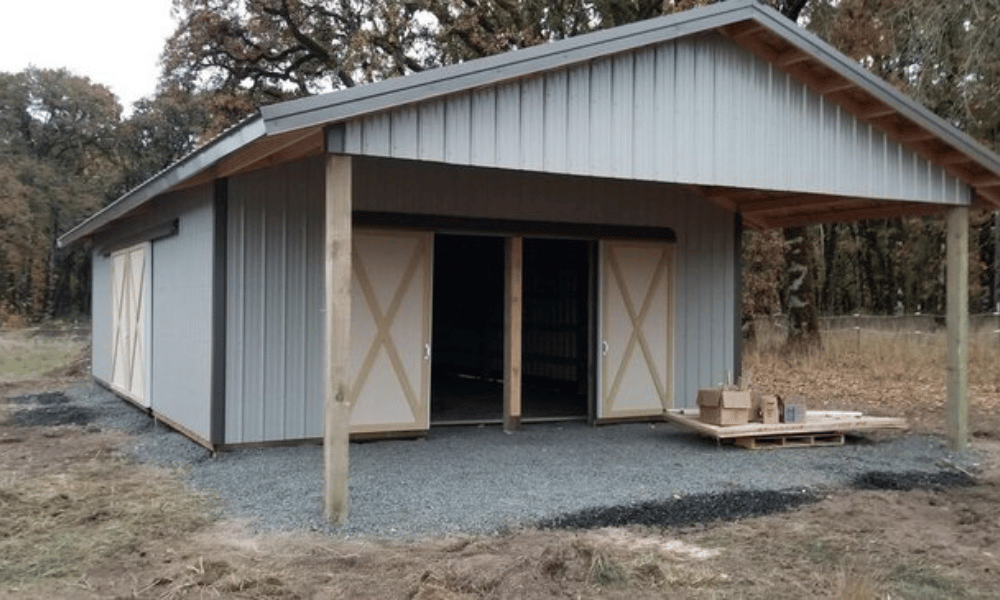When it comes to home improvement projects or new constructions, understanding contractor quotes can feel like deciphering hieroglyphics. If you're wondering how to compare estimates effectively, you've landed in the right spot! This article will serve as your trusty guide through the labyrinth of contractor estimates, with a special focus on pole barns—because who doesn’t love a good barn? Buckle up for a detailed journey filled with expert insights, tips, and a sprinkle of humor.
Understanding Contractor Estimates
What is a Contractor Estimate?
A contractor estimate is essentially an educated guess about how much your project will cost. But let’s be real: it’s more than just numbers scribbled on a napkin. It’s a comprehensive breakdown that includes labor costs, affordable pole barn materials, and maybe even some hidden fees you didn’t see coming.
The Importance of Accurate Estimates
Now, you might ask, "Why should I care about accurate estimates?" Well, let me tell you: accurate estimates can save you from financial heartache down the line. They help set clear expectations and avoid any nasty surprises once the work starts. After all, nobody wants to find out halfway through building their dream pole barn that they’re out of budget!
Types of Estimates: Which One Do You Need?
1. Fixed Price Estimates
Fixed price estimates are like having your cake and eating it too. You get a set price for the entire project upfront. What’s not to love?
2. Hourly Rate Estimates
If you prefer flexibility—or if the project scope may change—an hourly rate estimate could be your best friend. Just remember that this could lead to costs ballooning faster than you can say “pole barn.”
3. Cost-Plus Estimates
Cost-plus estimates are essentially "paying what it takes" plus an agreed-upon fee for the contractor's profit margin. It's great for large-scale projects but can sometimes spiral out of control.
Breaking Down the Components of an Estimate
Labor Costs
Labor costs often take up the lion's share of your estimate. But why? Craftsmanship doesn’t come cheap! Skilled laborers demand competitive wages.
Questions to Ask:
- What is included in labor costs? Are there different rates for different types of work?
Material Costs
Materials can vary widely in price based on quality and availability. For instance, if you're considering using treated lumber for your pole barn versus regular lumber—the difference could be significant!
Questions to Ask:
- Can I choose my own materials? Are there alternatives that could reduce costs?
Overhead and Profit Margin
Ah yes, the contractor's portion of profit! This percentage usually covers overhead expenses but also rewards them for their hard work—so don’t begrudge them too much!
Questions to Ask:
- What does your overhead cover? How much profit margin do you typically include?
Comparing Estimates: A Guide to Understanding Quotes from Contractors
Step 1: Gather Multiple Estimates
First things first! Don't settle for just one estimate—it's like going grocery shopping and only checking one store's prices! Collect at least three quotes for comparison.
Step 2: Create a Comparison Table
Once you’ve gathered those estimates, put 'em side by side in a comparison table! This visual representation makes it easier to see differences at a glance.
| Contractor Name | Labor Cost | Material Cost | Total Estimate | |------------------|------------|---------------|----------------| | Contractor A | $2000 | $3000 | $5000 | | Contractor B | $1800 | $3500 | $5300 | | Contractor C | $2200 | $2800 | $5000 |
Step 3: Look Beyond Numbers
Don’t just focus on who’s offering the lowest bid! Quality matters too; check reviews and previous work samples.
Common Pitfalls When Comparing Estimates
1. Ignoring Fine Print
Always read the fine print! Hidden fees lurking there can turn your sweet deal into sour grapes faster than you can say “contractor.”
2. Not Considering Timeline
Sometimes cheaper isn’t better if it means extended timelines that mess with your schedule or cause delays in getting that beautiful pole barn up!
Frequently Asked Questions (FAQs)
1. How do I know if an estimate is fair?
Look at averages in your area for similar projects, consult online resources or ask locals who’ve recently had similar work done.
2. Should I negotiate with contractors?
Absolutely! Most contractors expect some back-and-forth on pricing or terms—don’t shy away from negotiating!
3. Can I change my mind after accepting an estimate?
Sure thing—but keep in mind that changes may incur additional costs depending on where you are in the project timeline.

4. What's included in my estimate?
Typically labor, materials, permits (if necessary), and sometimes even Dean Lindsey Construction cleanup costs—but always clarify with contractors!
5. How long does an estimate remain valid?
Estimates often have an expiration date; usually around 30 days—but confirm this with each contractor.
6. Is it normal for estimates to vary significantly?
Yes! Differences can stem from varying material choices or contractor experience levels—always probe deeper into these variances.
Conclusion: Mastering Your Estimate Game
Navigating contractor quotes doesn’t have to make you feel like you're lost in translation! With this guide under your belt, you're now equipped with knowledge about breaking down estimates and making informed comparisons among contractors.
Remember that while pole barns might be our focus today, these principles apply across various construction types—you’re bound to encounter similar issues whether you're building a tiny shed or a sprawling mansion!
So go forth armed with questions and clarity as you embark on building your dream space—and may all your estimates come back right where they should be!
In summary, comparing estimates is not just about finding the best dollar value—it’s also about ensuring quality workmanship and peace of mind throughout your construction journey.
Happy building!